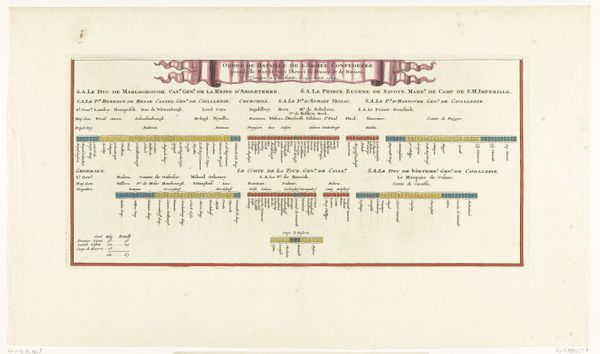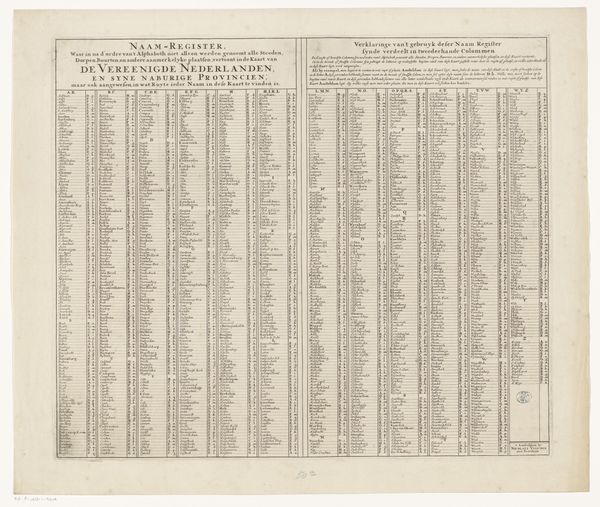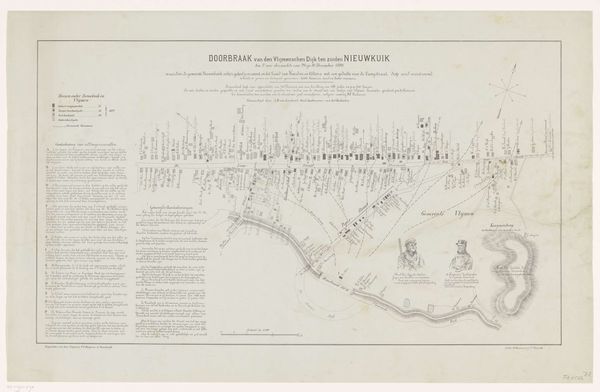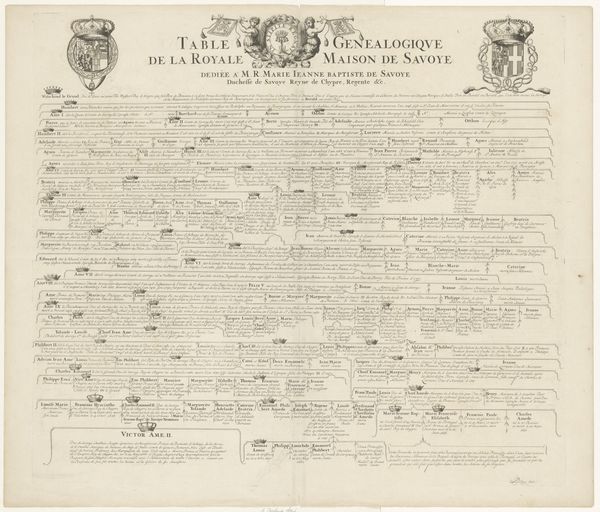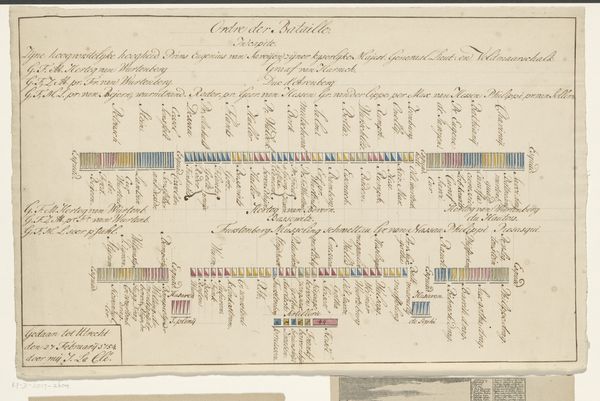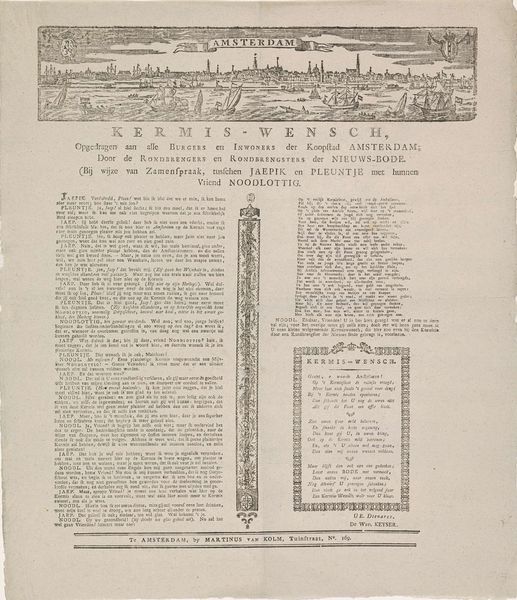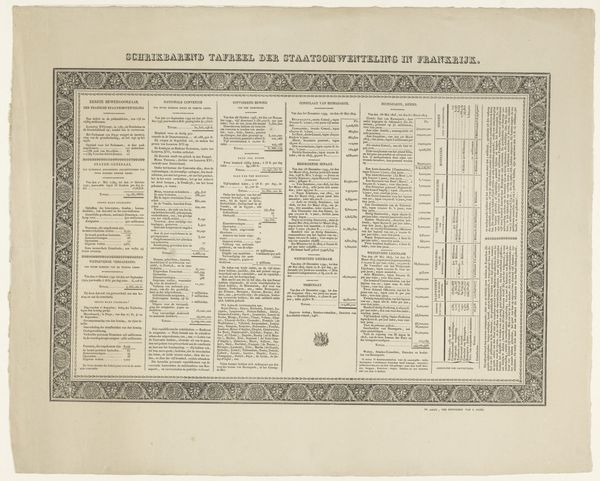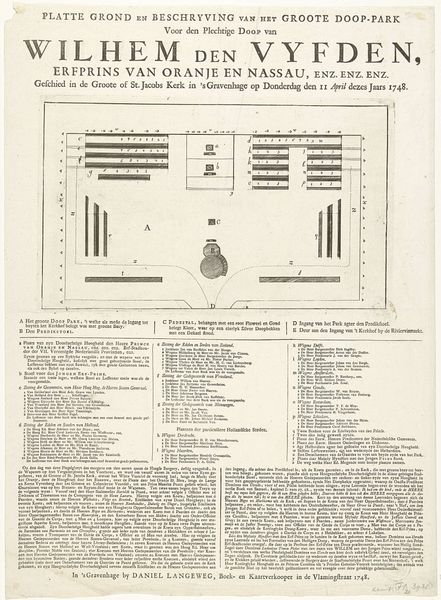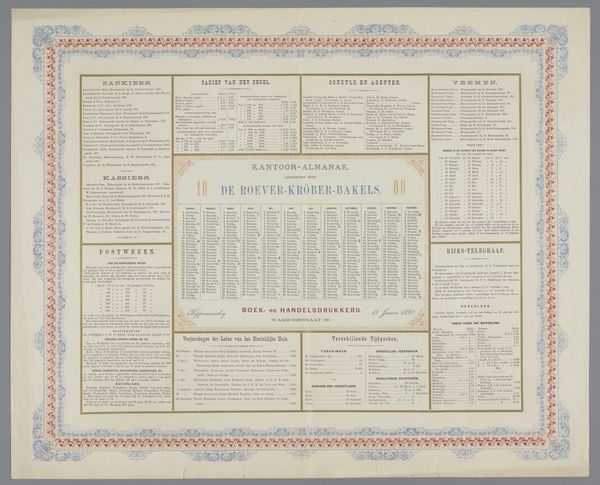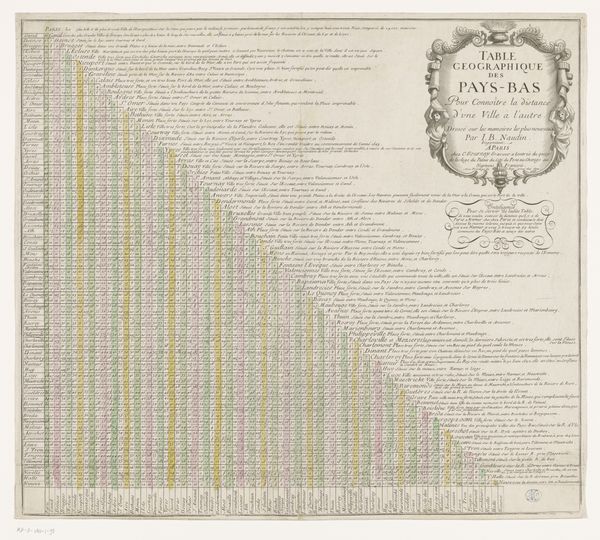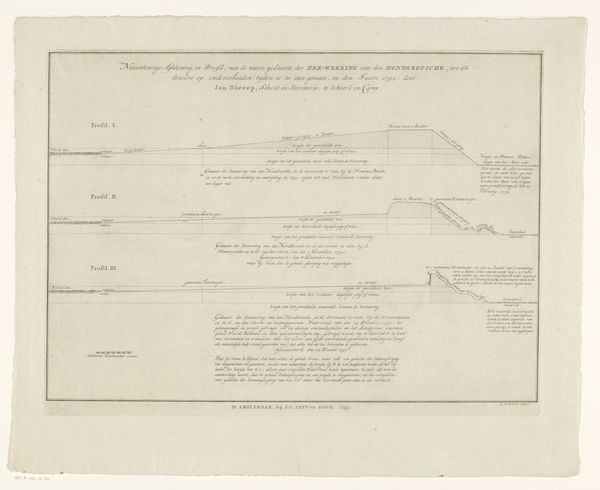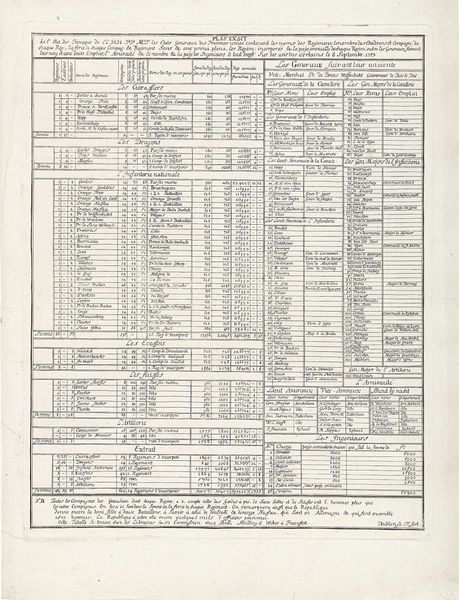
print, engraving
#
portrait
#
medieval
#
narrative-art
#
baroque
# print
#
line
#
history-painting
#
academic-art
#
decorative-art
#
engraving
#
miniature
Dimensions: height 462 mm, width 587 mm
Copyright: Rijks Museum: Open Domain
Curator: This is a rather curious object, isn’t it? "De 64 kwartieren van Maria Leopoldine, gravin van Nassau-Siegen," an engraving from 1665. Basically, a visual family tree, a display of her lineage. Editor: My first impression is... intricate. A spiderweb of connections. It looks less like a work of art and more like a meticulously detailed bureaucratic document, but for noble bloodlines! The sheer amount of tiny, spidery writing! Curator: Precisely! The density is overwhelming. Note how the graphic structure organizes noble quarters in regimented rows, a grid of identity. Each square holds heraldic emblems that seem more graphic than illustrative. A formalized history? Editor: Yes, very structural! It seems obsessed with codifying rank and inheritance. Beyond the semiotic density, I can't help but find it a little…dull. The emotional impact is flattened under all that detail. Curator: Perhaps, but that dullness serves a purpose. It’s about asserting status, not evoking feeling. Consider how the lines themselves contribute—they define the limits, creating a rigid sense of order out of what could easily be chaos. This piece is, quite literally, a statement, set in stone. The family shields, I’m finding, appear as symbolic shorthands of a grand historical narrative. Editor: You're right to draw attention to the shields! It’s almost a purely symbolic endeavor, isn't it? Very different from portraiture where an artist conveys something about a sitter’s essence. Though, what does all this obsessive cataloging mean about our need to organize ourselves in history? I'm still not sure I love looking at it. It seems dryly utilitarian, a blueprint for something other than aesthetic wonder. Curator: I'm warming up to the idea of this blueprint; seeing the art and the document co-exist. Maybe appreciating beauty here is about appreciating that quest for order—an idea as old as civilization, presented with such obsessive intensity. That alone can be a rather strange form of… expression? Editor: I concede your point. In its rigid formality, in the way the artist makes visual claims through organization, it possesses a compelling intensity after all. Though, next time I prefer to spend the day appreciating a painting.
Comments
No comments
Be the first to comment and join the conversation on the ultimate creative platform.
